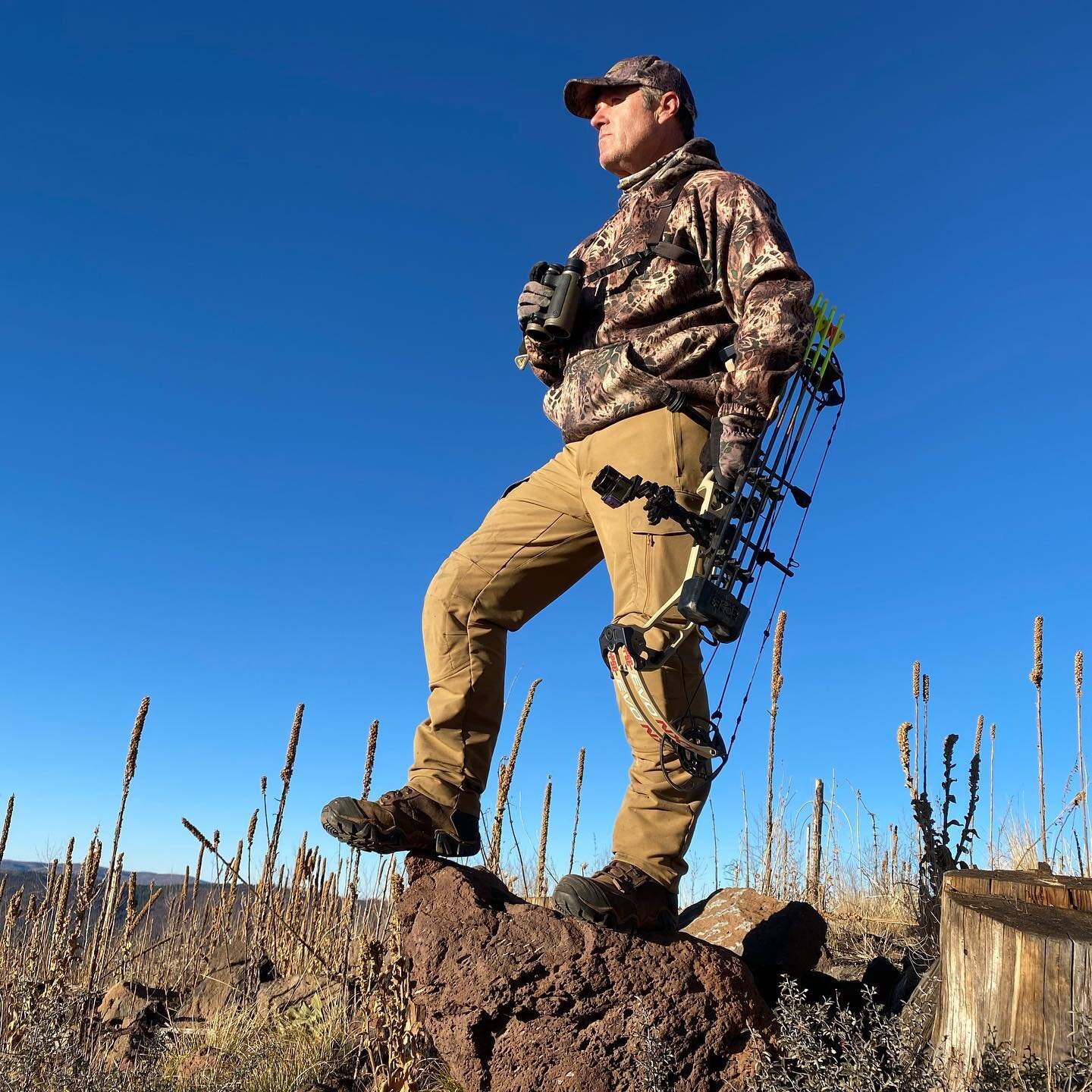By Casey Christman, Co-Host of American Archer®
The sun’s setting rays slowly crept down the ridge line high above me, dancing through the treetops as the light breeze blew through barren branches. Suddenly, the serenity and calm of that evening’s sit was shattered by violent crashing and the sounds of breaking branches coming down the ridge in my direction.
As I frantically searched the brush with my binoculars, I could make out a large rutting whitetail buck, hot on the heels of a doe. The doe quickly turned right and paralleled my stand on the side of the ridge at a mere 60 yards.
The buck had other plans and stopped momentarily to assess the situation. Panting, with tongue hanging out, the 300-plus pound cow of a whitetail elected to get a drink from the pond my stand was perched high above. He began slowly meandering his way down the ridge, weaving his way through the thick undergrowth.
Eventually, he popped out of the tree line within 35 yards of my set and began drinking. Unfortunately for me, he was positioned at the pond directly facing my tree stand. After watering at the pond for over 15 minutes, the giant-bodied buck turned and began walking straight away from me.
I made one last distance check with the rangefinder at a tree I knew he would have to turn left or right at in the next few seconds -- 47 yards. As the buck approached the tree, he turned right to go back up the ridge and provided a quartering-away shot opportunity. Anchoring at full draw, I let out a low, “meeeeeeeh” which stopped him in his tracks. I settled my pin and slowly touched off.
The shot placement was perfect, and the buck went crashing back up a small hill into the woods. Just over the top of that hill, I could hear him fall. The mega-bodied, 155” 10-point made it a short 50-60 yards after arrow impact.
Shot distance for this hunt is a key part of the story. Many bow hunters I know practice all year or at least throughout the entire summer to prepare themselves for fall archery season. While shooting, I’ve noticed many friends and others I’ve spoken with only practice out to the distance they would be comfortable executing a shot on whatever game animal it is they’re after.
Personally, I like to practice shooting at long distances as much as possible and continually push my shooting distance limits each year. The reason for this is because like so many other sports and life endeavors, archery and shot placement is just as much mental as it is physical ability.
Rolling into spring turkey season, I typically spend time shooting anywhere from 10-70 yards. By the end of summer and leading into fall, I’m letting arrows rip at anywhere from 20-100 yards and sometimes out to 120 yards depending how much time I’ve spent shooting.
I want to make it clear I do not condone or believe a 100+ yard archery shot at a whitetail would be considered ethical, nor would I ever attempt one on any of the game animals I typically pursue. The point is, if I can confidently shoot an 8–10-inch group at 100, 110 or 120 yards during practice, then a 50-yard shot in the woods feels easy in comparison.
By practicing long-range shots, you’re mentally preparing yourself and building confidence for the shot that is likely half the practice distance or even less. Long-range shooting also helps point out the flaws in your form and will make you a better shooter.
To all our readers, followers, and show-viewers, thank you for your support. Shoot straight, shoot often and best of luck this fall!
And remember…practice long to make 50 yards and closer seem short!
-Casey
































